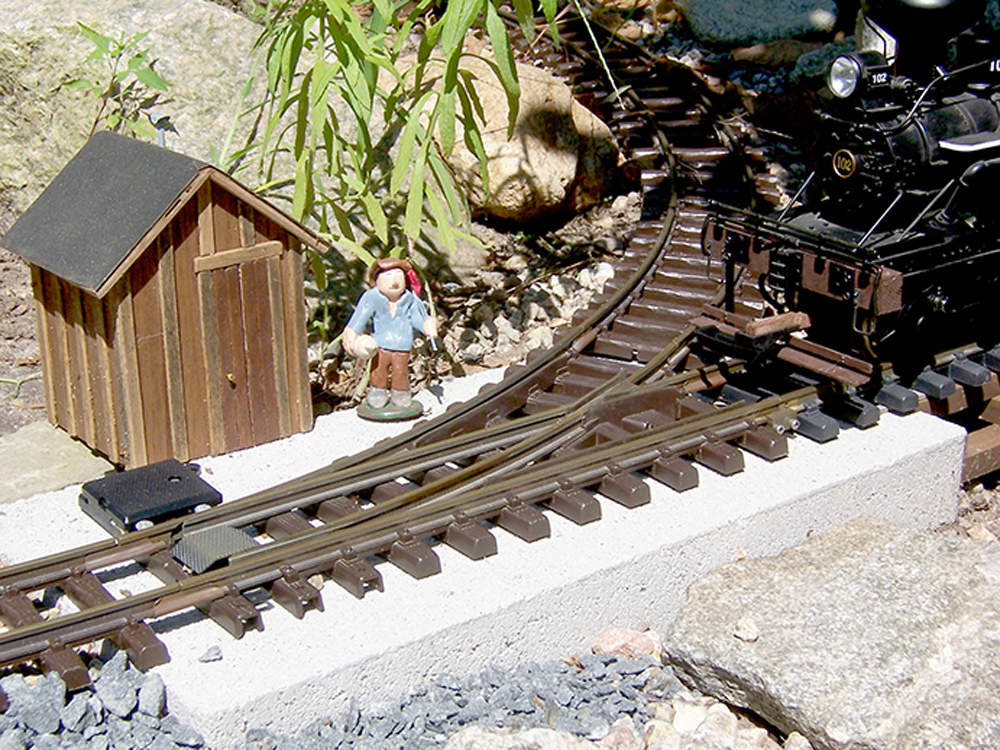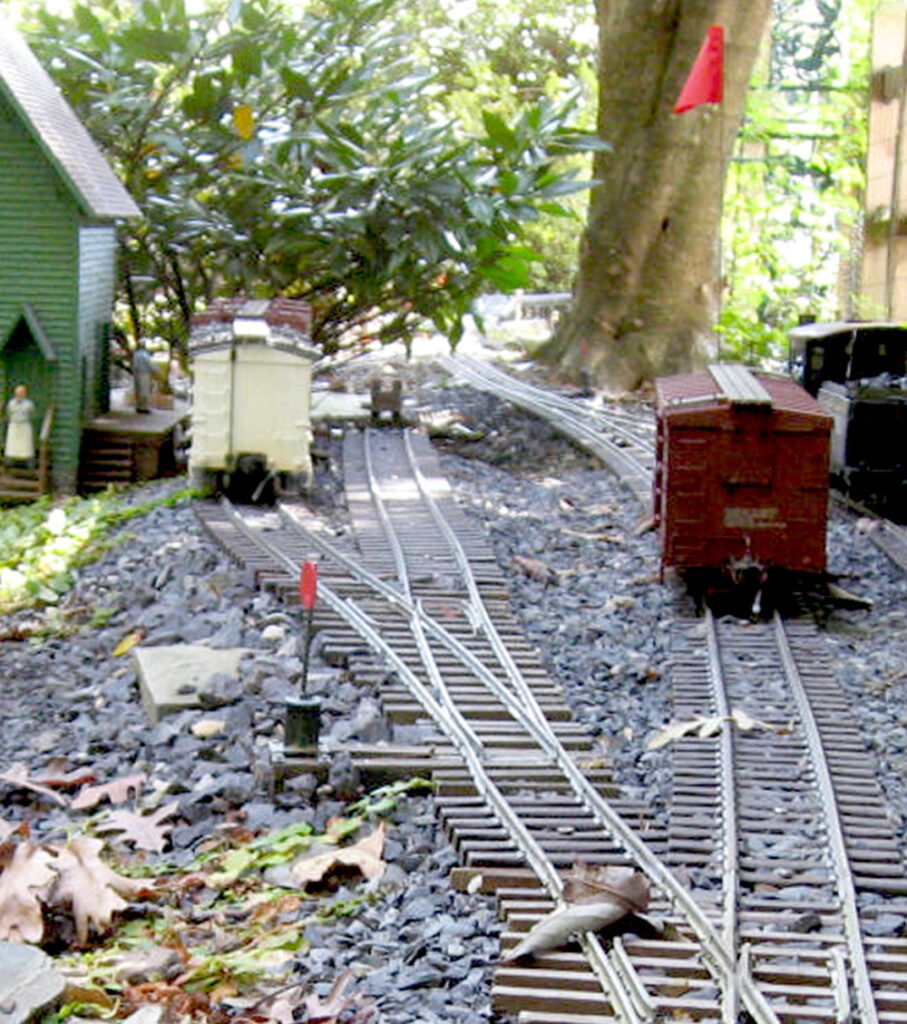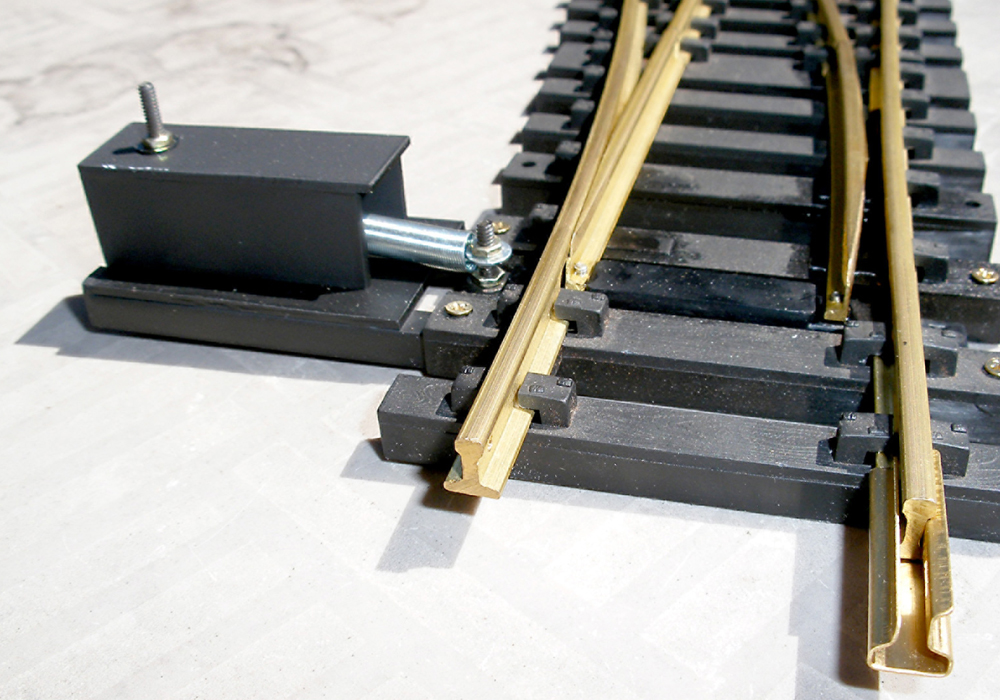Tips for your right-of-way
Easy tunnel liner
When building tunnels, making a solid interior structure to maintain the tunnel’s structural integrity may be a challenge to those who may not know where to start. An old mailbox makes a perfect shell for a tunnel—just remove the flag, door, and end, and install it. The size of a standard mailbox should fit an average-size model (but always check clearance first). If your railroad calls for a longer tunnel, just attach another old mailbox to the first one. —Peter Muto, State College, Pennsylvania

Try a switch brick
I have many switches on my railway. Keeping them level and functional was proving to be problematic. I found that placing a 2 x 8 x 16″ cement patio paver under the switches kept them level and greatly reduced derailments. In some cases I painted the pavers with spray paint before installation to help conceal them. In others I brought the ballast onto the rails, but not up to the points of other moving parts. Placing your switches on solid platforms like this will help keep them level and make it easier to keep dirt and debris out of the mechanics. —Todd Haskins, Brewster, Massachusetts

Inexpensive train “brakes”
Passing sidings on my railway are on 4% grades. I needed a good way to hold my cars in place. I first tried railroad spikes but found that they were easily misplaced, and hard to see because the end of a car would hang over the spike. I found inexpensive survey flags at my local hardware store for 10¢ each. I bought a dozen and they are perfect. The wires are thin enough to fit through the mounting holes in the ties or I can just press them into the ballast. They easily hold my five- or six-car trains on the grade. Best of all, they’re easy to spot, as the red flag notifies each operator that the “train brakes” are set. —Bruce Chandler, Burke, Virginia
Loosening tight screws in plastic
While recently dismantling a locomotive for adaptation to battery power, the last two screws holding the body to the frame would not come loose, in spite of my best efforts with the screwdriver. I suspect that, in the factory, assembly is done using an electric screwdriver, which can result in tight fixings. I hit on the idea of softening the plastic around the metal screw using an electric soldering iron. I applied the tip of the iron to the head of the metal screw until the surrounding plastic felt slightly warm to the touch, at which time the screw was easily removed. With a little care, no damage was done to the locomotive or the screw head and the engine was easily reassembled later. —Les Penrose, Orange, New South Wales, Australia

Spring-loaded turnout control
Battery-controlled trains with no track power (or any other power supply nearby) can present a problem when using manual turnouts. You always have to reach down and manually throw the switch to safely guide the trains, especially with reversing loops. A simple method of control is to keep the turnout in a fixed position with spring tension. The train easily passes back through the turnout in the returning direction from the loop if only very light pressure is held against the point rails.
I built such a device to bolt onto an Aristo-Craft wide-radius turnout, using Evergreen Styrene (060″ sheet and 1/4″-square tubing), a 1/4″ x 2 1/2″ spring, and 4-40 socket-head screws, nuts, and washers. The fixed end of the spring is slightly movable to adjust the tension, if needed. Materials were inexpensive and it only took an evening to construct. The unit could be installed on either side of the turnout and can be constructed for any manufacturer’s track. —Bradley Gray, Campbell, California













